-
×
![]() Flamingo Aloha 3D Hawaiian Set - Pink Flamingo Hibiscus Flower 3D Hawaiian Set, Cartoon Flamingo 3D Hawaiian Set Unisex Flamingo Lover
1 × $43.00
Flamingo Aloha 3D Hawaiian Set - Pink Flamingo Hibiscus Flower 3D Hawaiian Set, Cartoon Flamingo 3D Hawaiian Set Unisex Flamingo Lover
1 × $43.00 -
×
![]() Bull Dog Aloha 3D Hawaiian Set - Tropical Leaves 3D Hawaiian Set, Funny Bull Dog 3D Hawaiian Set - Perfect Gift Unisex Bull Dog Lover
1 × $43.00
Bull Dog Aloha 3D Hawaiian Set - Tropical Leaves 3D Hawaiian Set, Funny Bull Dog 3D Hawaiian Set - Perfect Gift Unisex Bull Dog Lover
1 × $43.00 -
×
![]() All-Over Print Recycled String Bikini Set Two Piece 3D
1 × $44.99
All-Over Print Recycled String Bikini Set Two Piece 3D
1 × $44.99 -
×
![]() All-Over Print Recycled String Bikini Set Two Piece 3D
1 × $44.99
All-Over Print Recycled String Bikini Set Two Piece 3D
1 × $44.99
Fashion tips
The Colorful Evolution of Hawaiian Shirt History
The Hawaiian shirt History, also known as the Aloha shirt, is a vibrant and iconic garment that has transcended its tropical origins to become a global fashion statement. With its bold patterns, vivid colors, and relaxed style, the Hawaiian shirt has a rich history that intertwines with the cultural heritage of the Hawaiian Islands.
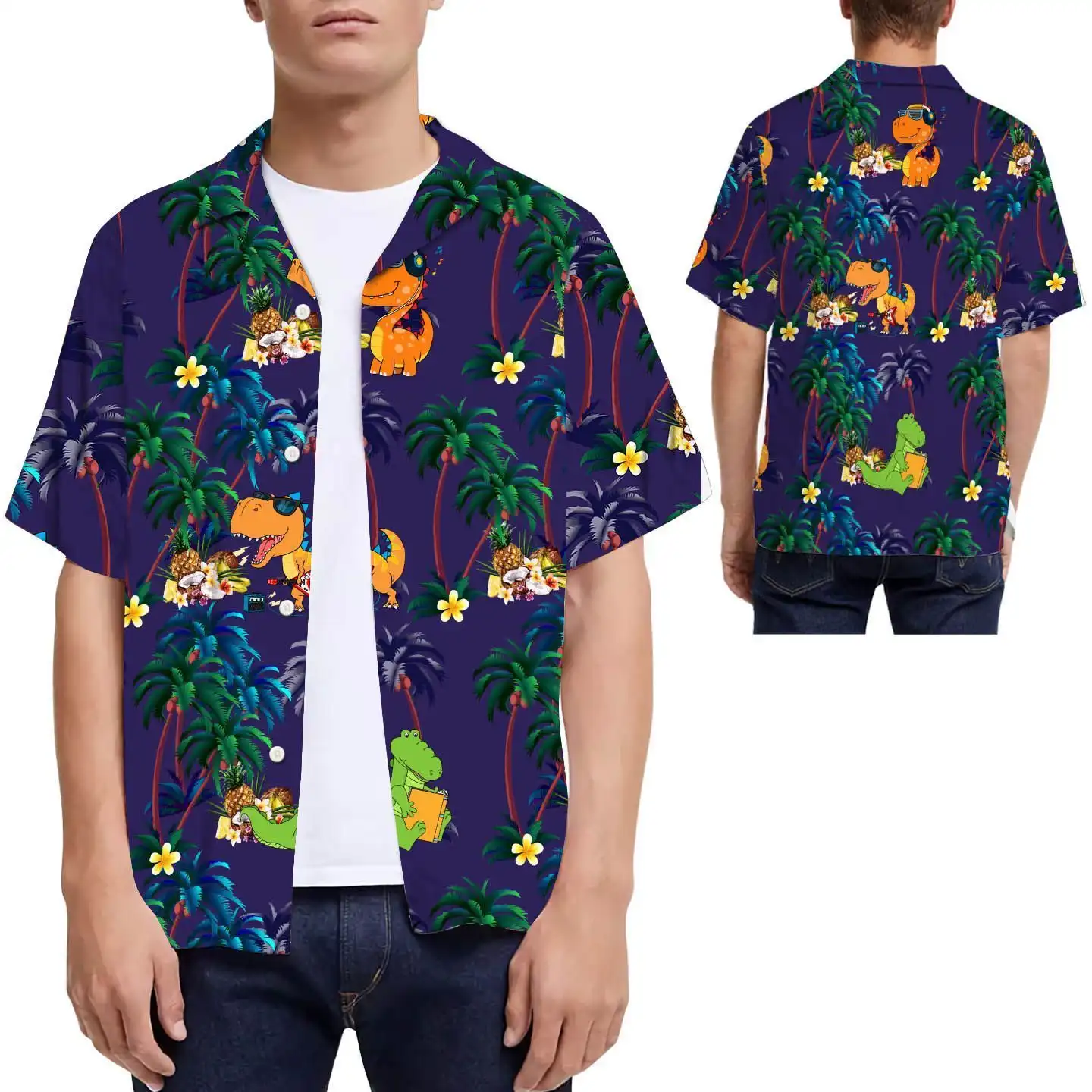
Origins of the Hawaiian Shirt
The roots of the Hawaiian shirt can be traced back to the early 20th century when Hawaii was still a territory of the United States. In the 1920s and 1930s, Hawaiian manufacturers began producing brightly colored shirts inspired by the islands’ natural beauty and tropical flora.
Early Inspirations
- Traditional Hawaiian Tapa Cloth: The intricate designs and patterns found in traditional Hawaiian tapa cloth, made from the bark of the mulberry tree, served as inspiration for the early Hawaiian shirt patterns.
- Asian Influences: The influx of Asian immigrants, particularly from China and Japan, brought their textile traditions and printing techniques, which influenced the development of Hawaiian shirt designs.
Pioneering Manufacturers
- Ellery Chun: Considered the “Father of the Hawaiian Shirt,” Ellery Chun founded the King-Smith Clothing Company in the 1920s and is credited with creating some of the earliest Hawaiian shirt designs.
- Kamehameha Garment Company: Established in the 1930s, this company played a crucial role in popularizing the Hawaiian shirt by mass-producing affordable versions for the local market.
Evolution of Hawaiian Shirt Designs
As the popularity of Hawaiian shirts grew, so did the diversity of their designs. Over the decades, artists and designers have drawn inspiration from various sources, creating a kaleidoscope of patterns and motifs.
Nature-Inspired Designs
The lush tropical landscapes, vibrant flowers, and exotic wildlife of Hawaii have been a consistent source of inspiration for Hawaiian shirt designs. Common motifs include:
- Hibiscus flowers
- Palm trees
- Pineapples
- Tiki masks
- Tropical birds
Cultural Influences
Hawaiian shirt designs have also incorporated elements from various cultures that have shaped the islands’ heritage:
- Polynesian geometric patterns
- Japanese woodblock prints
- Chinese calligraphy
- Samoan tattoo designs
Contemporary Artistic Interpretations
In recent years, contemporary artists have reimagined Hawaiian shirt designs, bringing their unique perspectives and styles to the forefront. These modern interpretations often blend traditional elements with abstract patterns, creating bold and innovative designs.
Cultural Significance of Hawaiian Shirts
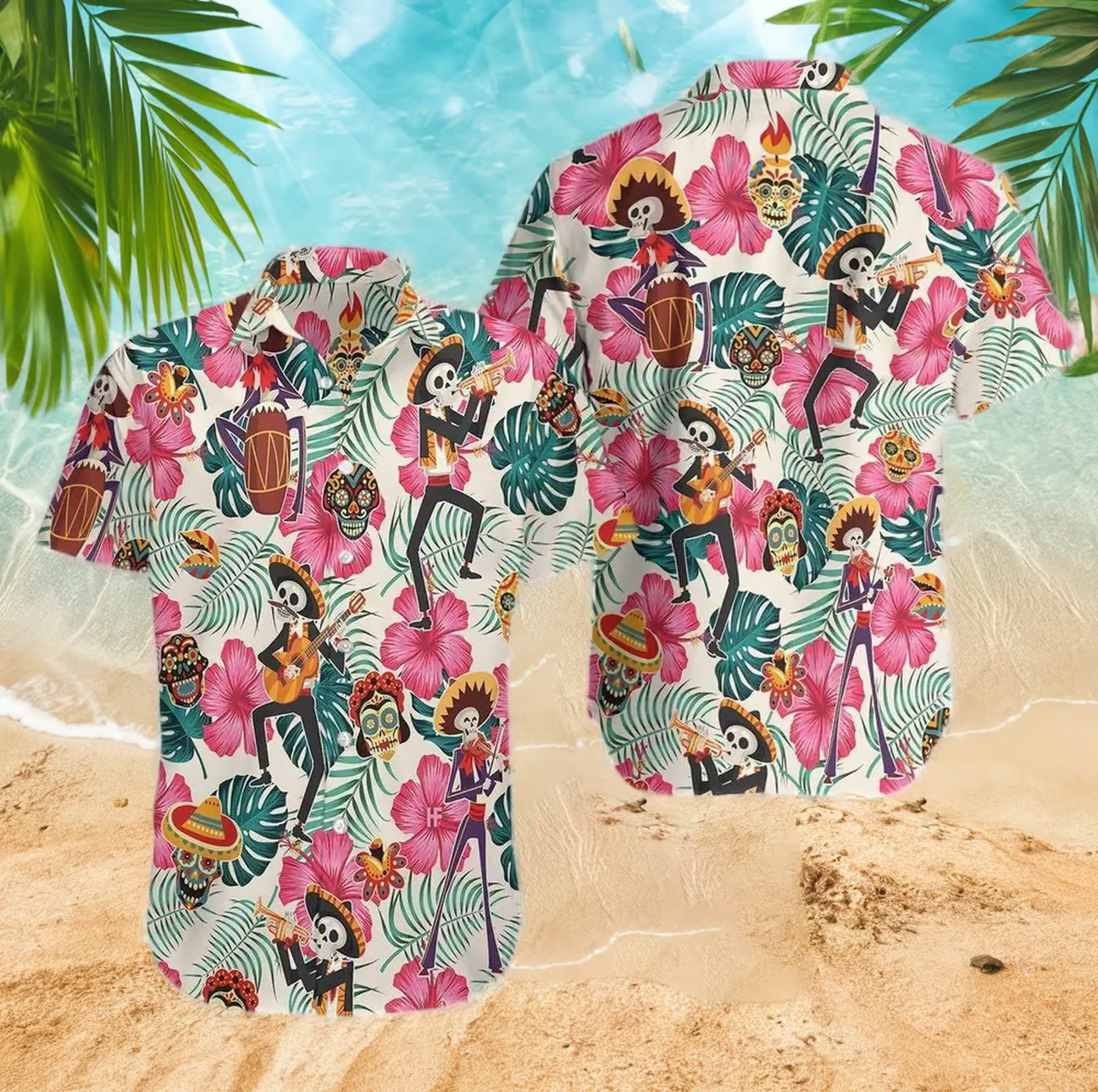
Beyond their aesthetic appeal, Hawaiian shirts hold deep cultural significance for the people of Hawaii and the broader Pacific region.
Expression of Hawaiian Identity
The Hawaiian shirt is a tangible representation of the vibrant and diverse culture of the Hawaiian Islands. Wearing a Hawaiian shirt is often seen as a way to celebrate and embrace one’s Hawaiian heritage and identity.
Symbols of Aloha Spirit
The Aloha Spirit, which embodies the values of love, peace, compassion, and respect, is deeply ingrained in Hawaiian culture. Hawaiian shirts, with their vibrant colors and welcoming patterns, are considered an embodiment of this spirit, promoting a sense of warmth and inclusivity.
Preservation of Traditional Arts
Many traditional Hawaiian arts, such as woodcarving, weaving, and printmaking, have influenced the designs and manufacturing techniques of Hawaiian shirts. By embracing these garments, individuals contribute to the preservation and celebration of these cultural practices.
Popularization of Hawaiian Shirts
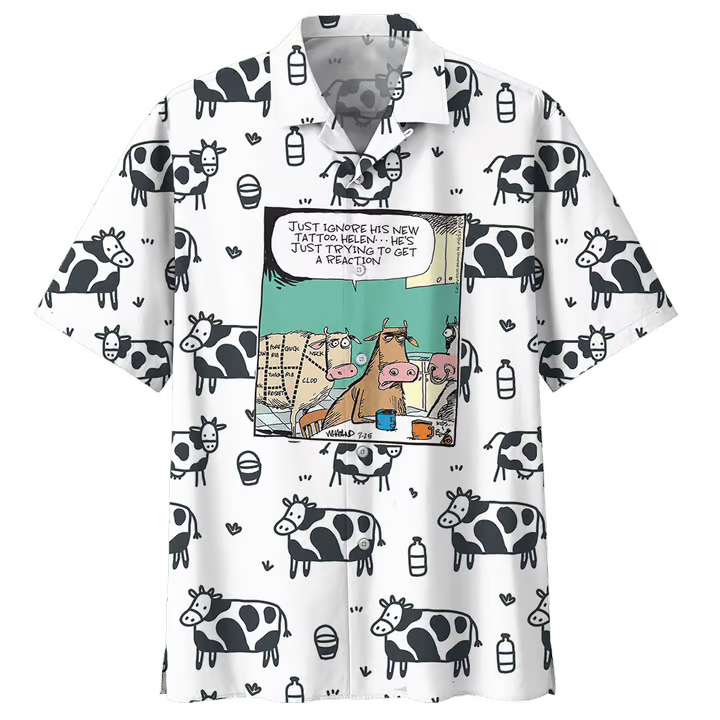
While initially associated with Hawaii and the Pacific Islands, Hawaiian shirts have gained global recognition and popularity over the years.
The Rise of Tourism
As tourism to Hawaii flourished in the mid-20th century, visitors sought to bring a piece of the islands’ tropical charm back home. Hawaiian shirts became a popular souvenir, contributing to their widespread popularity.
Hollywood Influence
Hollywood played a significant role in popularizing Hawaiian shirts. Movies set in tropical locations, such as “Blue Hawaii” starring Elvis Presley, showcased the vibrant styles and helped cement their association with leisure and relaxation.
Mainstream Fashion Embrace
In the 1960s and 1970s, Hawaiian shirts transitioned from vacation wear to mainstream fashion. Designers and retailers began incorporating the iconic patterns into their collections, making Hawaiian shirts a staple of casual and resort wear.
Materials Used in Traditional Hawaiian Shirts
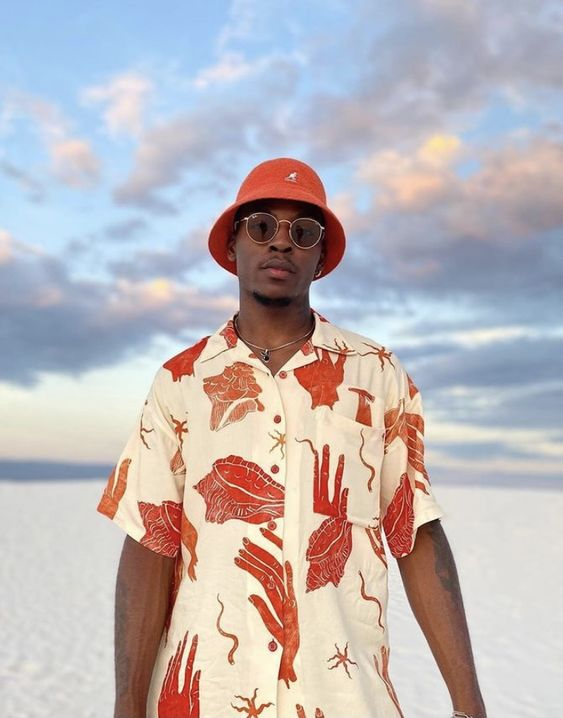
Traditional Hawaiian shirts were crafted using a variety of natural and synthetic materials, each contributing to their unique look and feel.
Cotton
- Cotton Broadcloth: A lightweight, plain-woven cotton fabric, often used for its breathability and softness.
- Cotton Lawn: A finely woven, lightweight cotton fabric with a crisp, smooth texture.
Rayon
- Rayon Challis: A lightweight, smooth rayon fabric with a slight sheen, providing a luxurious drape.
- Rayon Crepe: A crinkled rayon fabric with a textured appearance, adding depth to the patterns.
Silk
- Silk Shantung: A crisp, lightweight silk fabric with a subtle ribbed texture, lending a luxurious touch to Hawaiian shirts.
Blends
- Cotton-Polyester Blends: Combining the breathability of cotton with the wrinkle-resistance and durability of polyester, creating practical and low-maintenance Hawaiian shirts.
Famous Hawaiian Shirt Wearers Hawaiian shirts have been embraced by numerous celebrities, artists, and public figures over the years, contributing to their widespread popularity and cultural significance.
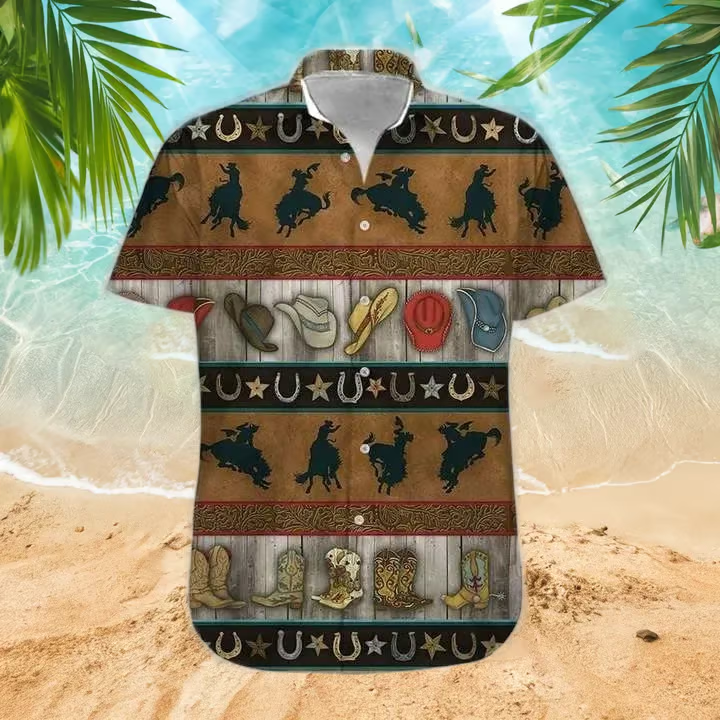
Musicians
- Elvis Presley: The “King of Rock and Roll” famously donned Hawaiian shirts in several movies and performances, cementing their association with leisure and relaxation.
- Tom Selleck: Best known for his role as Thomas Magnum in the TV series “Magnum, P.I.,” Selleck’s character popularized the Hawaiian shirt as a stylish and laid-back wardrobe choice.
Actors and Comedians
- Bill Murray: Known for his quirky fashion sense, Bill Murray has often sported Hawaiian shirts, both on and off the screen, adding to their cool and eccentric appeal.
- Jeff Bridges: The actor’s portrayal of “The Dude” in the cult classic “The Big Lebowski” featured Hawaiian shirts as a central part of the character’s iconic wardrobe.
Politicians
- Barack Obama: The former President of the United States has been frequently photographed wearing Hawaiian shirts, highlighting his connection to his Hawaiian roots.
- Al Gore: While serving as Vice President, Al Gore helped popularize the “Casual Friday” trend, often donning Hawaiian shirts in the White House.
Modern Trends in Hawaiian Shirt Fashion
Hawaiian shirts have evolved beyond their traditional roots, adapting to changing fashion trends and cultural influences.
Contemporary Reinterpretations
Modern designers and fashion brands have reimagined Hawaiian shirts, incorporating contemporary patterns, bold graphics, and unique fabric combinations. These reinterpretations cater to a younger demographic and appeal to those seeking a more modern and edgy take on the classic Hawaiian shirt.
Streetwear and Skate Culture
Hawaiian shirts have found a home in streetwear and skate culture, embraced by artists, musicians, and influencers for their vibrant, laid-back aesthetic. This has led to collaborations between Hawaiian shirt manufacturers and streetwear brands, creating limited-edition designs that blend traditional and contemporary elements.
Sustainable and Ethical Fashion
As consumers become more environmentally conscious, there has been a growing demand for sustainable and ethically produced Hawaiian shirts. Some manufacturers have embraced eco-friendly materials, such as organic cotton and recycled fabrics, while others have focused on fair trade and ethical production practices.
Collecting Vintage Hawaiian Shirts
For many fashion enthusiasts and collectors, vintage Hawaiian shirts hold a special allure, representing a piece of history and nostalgia.
Rare and Limited Editions
Vintage Hawaiian shirts, especially those produced in limited quantities or with unique designs, are highly sought after by collectors. These rare finds can command premium prices at auctions and specialized vintage clothing stores.
Preserving Cultural Heritage
Collecting vintage Hawaiian shirts is not only a fashion statement but also a way to preserve and appreciate the cultural heritage and craftsmanship of past generations. These garments serve as tangible reminders of the islands’ rich tradition and the evolution of Hawaiian shirt design.
Restoration and Care
Proper care and restoration techniques are essential for preserving vintage Hawaiian shirts. Collectors often seek the expertise of professionals skilled in fabric restoration, stain removal, and garment repair to maintain the integrity and beauty of their prized pieces.
Hawaiian Shirt Manufacturing Process

The production of Hawaiian shirts involves a combination of traditional techniques and modern manufacturing methods.
Pattern Design and Printing
- Design Development: Artists and designers create intricate patterns and motifs, often drawing inspiration from nature, cultural elements, and artistic influences.
- Screen Printing: Traditional screen printing techniques are used to transfer the designs onto fabric, ensuring vibrant colors and crisp patterns.
- Digital Printing:With advancements in technology, digital printing has become a popular method for producing Hawaiian shirt designs, allowing for intricate details and vibrant colors to be printed directly onto the fabric.
Fabric Selection and Cutting
- Fabric Choices: Manufacturers carefully select high-quality fabrics, such as cotton, rayon, silk, or blends, based on the desired look and feel of the Hawaiian shirts.
- Cutting Process: Patterns are laid out on multiple layers of fabric, which are then cut according to size and shape, ensuring precision and consistency in the final product.
Sewing and Assembly
- Seamstresses and Tailors: Skilled seamstresses and tailors sew the cut fabric pieces together, paying attention to details like pattern matching and seam finishing.
- Collar and Cuff Construction: Specialized techniques are used to create the distinctive collars and cuffs characteristic of Hawaiian shirts, adding structure and style to the garments.
Finishing Touches and Quality Control
- Button Attachment: High-quality buttons, often made from natural materials like coconut or seashells, are carefully attached to the shirts, complementing the overall design.
- Quality Inspection: Each Hawaiian shirt undergoes rigorous quality control checks to ensure that seams are secure, patterns are aligned, and colors are vibrant, meeting the standards of excellence expected from these iconic garments.
Impact of Hawaiian Shirts on Global Fashion
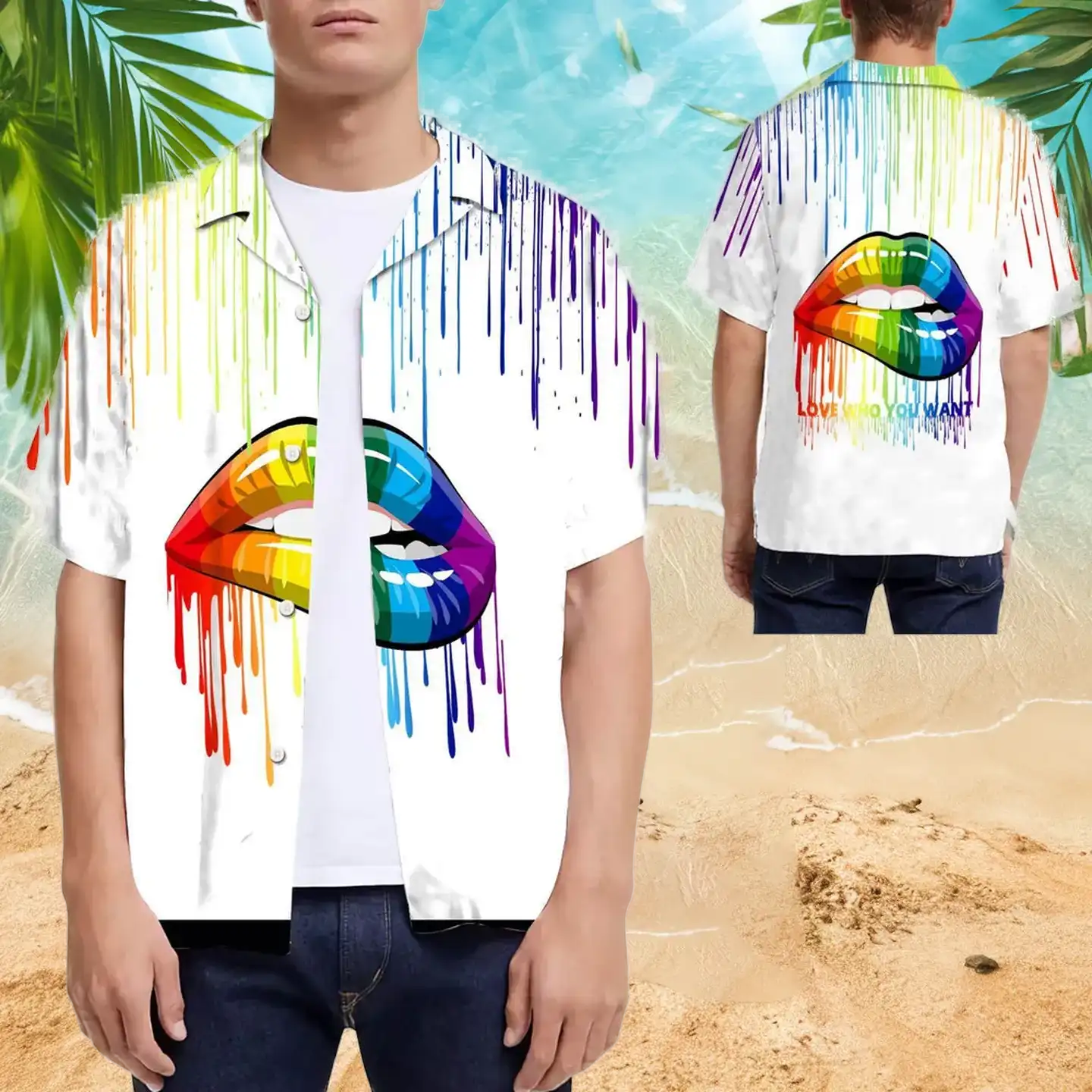
The influence of Hawaiian shirts extends far beyond their tropical origins, shaping global fashion trends and inspiring designers around the world.
Resort and Vacation Wear
Hawaiian shirts have become synonymous with leisure and relaxation, making them a popular choice for resort wear and vacation attire worldwide. Their vibrant colors, bold patterns, and lightweight fabrics evoke a sense of escapism and carefree spirit, appealing to travelers seeking a touch of paradise wherever they go.
Runway and High Fashion
Designers have drawn inspiration from Hawaiian shirts, incorporating elements of their unique style into high fashion collections and runway shows. From oversized floral prints to relaxed silhouettes, the influence of Hawaiian shirts can be seen in the work of renowned fashion houses, adding a touch of laid-back luxury to their designs.
Street Style and Urban Fashion
The casual and colorful aesthetic of Hawaiian shirts has also permeated street style and urban fashion scenes, with influencers and trendsetters mixing and matching these iconic garments with contemporary pieces to create eclectic and eye-catching looks. The versatility of Hawaiian shirts allows them to transition seamlessly from beachside gatherings to city streets, making them a versatile wardrobe staple for fashion-forward individuals.
Conclusion
In conclusion, the Hawaiian shirt holds a special place in the world of fashion, blending cultural heritage, artistic expression, and timeless style into a single garment. From its humble origins in the Pacific Islands to its global popularity today, the Hawaiian shirt continues to captivate and inspire fashion enthusiasts, collectors, and designers alike. Whether worn for leisurely vacations, red-carpet events, or everyday outings, the Hawaiian shirt remains a symbol of laid-back elegance and tropical charm, transcending borders and generations with its enduring appeal. As trends come and go, the allure of the Hawaiian shirt endures, reminding us of the beauty of craftsmanship, the power of storytelling through design, and the joy of embracing a piece of paradise wherever we may be.


 Flamingo Aloha 3D Hawaiian Set - Pink Flamingo Hibiscus Flower 3D Hawaiian Set, Cartoon Flamingo 3D Hawaiian Set Unisex Flamingo Lover
Flamingo Aloha 3D Hawaiian Set - Pink Flamingo Hibiscus Flower 3D Hawaiian Set, Cartoon Flamingo 3D Hawaiian Set Unisex Flamingo Lover  Bull Dog Aloha 3D Hawaiian Set - Tropical Leaves 3D Hawaiian Set, Funny Bull Dog 3D Hawaiian Set - Perfect Gift Unisex Bull Dog Lover
Bull Dog Aloha 3D Hawaiian Set - Tropical Leaves 3D Hawaiian Set, Funny Bull Dog 3D Hawaiian Set - Perfect Gift Unisex Bull Dog Lover  All-Over Print Recycled String Bikini Set Two Piece 3D
All-Over Print Recycled String Bikini Set Two Piece 3D  All-Over Print Recycled String Bikini Set Two Piece 3D
All-Over Print Recycled String Bikini Set Two Piece 3D 